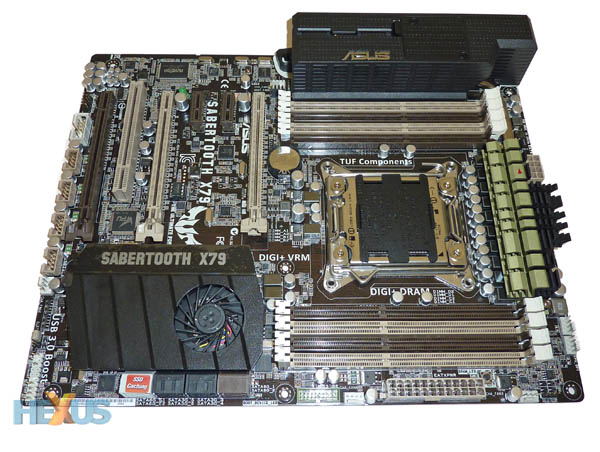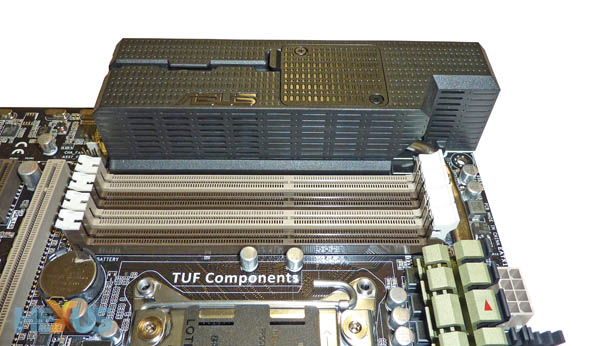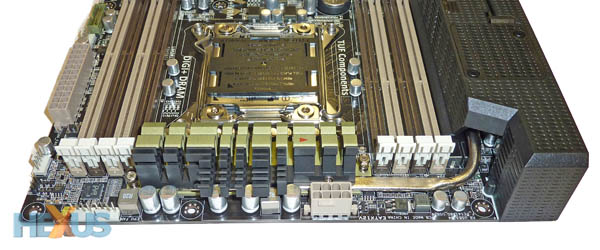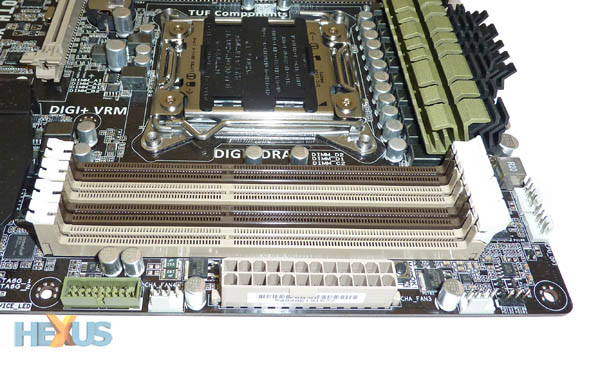X79 needs a helping hand
Tempted by an Intel Sandy Bridge-E chip? If so, you're going to have to pony up another £200, at the very least, for a supporting X79 motherboard. ASUS has seven such boards in its stable, ranging from £220 through to £320. Currently priced at £250 is the Sabertooth X79 TUF.

The X79 model carries the same five-year warranty present on other Sabertooth boards and keeps the distinct livery intact. The colour scheme is like Marmite: you'll either love it or loathe it. This time around, ASUS has amped everything up another notch, and attention is immediately drawn to the enclosed cooling on the far side.

Though not of much practical benefit when running at stock speeds, overclocking, especially via voltage increases, causes on-board temperatures to spiral. Sabertooth X79 looks to keep these in check by actively cooling the heatpipe-connected power regulation components located under the light-green heatsink. Their heat is drawn past the DIMM locks and through to the rectangular section on the far side, where sits a top-mounted 40mm fan that pushes air over a bunch of heatpipe-connected aluminium fins and out of the back through a TUF-specific I/O shield.
The 'thermal armour' design isn't as all-encompassing as, say, the P67 Sabertooth's, and the reason is that ASUS has limited space to play with once the socket and DIMM slots have been put into the equation.

Remember the quad-channel memory setup of the Sandy Bridge Extreme chip? It works by populating one DIMM per channel and most boards, including the Sabertooth, will run with four DIMMs either side of the huge LGA2011 socket. Memory needs to be installed in the same-coloured slots on both sides - they're not in the exact same location, mind - to make up the optimum four channels, and ASUS supports DDR3-1,866 off the bat.
The company extends the digital power control, dubbed DIGI+, to the memory-controller and memory as well as the CPU. The premise here is to deliver more-granular, stable voltages to the key parts of the board.

Numerous fan headers around the edge of the board and good locations for the 24-pin and eight-pin CPU plugs makes for a clean design. There's no issue in fitting a standard LGA2011 cooler and removal of DIMM slots, and this is impressive given the board is presented in a standard ATX form factor.









